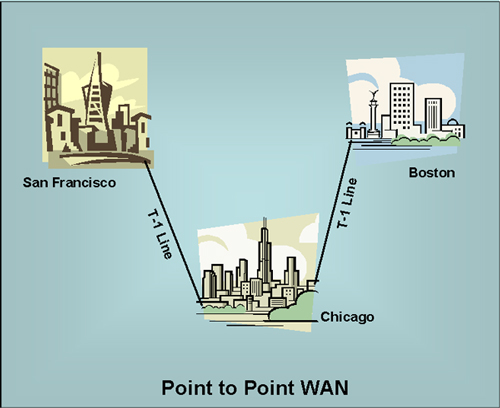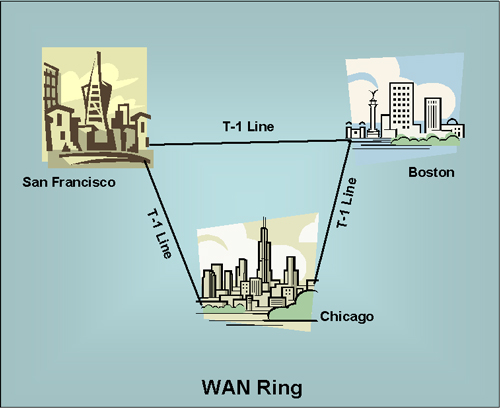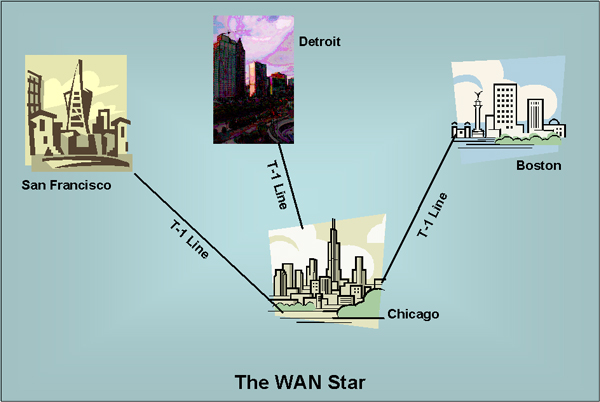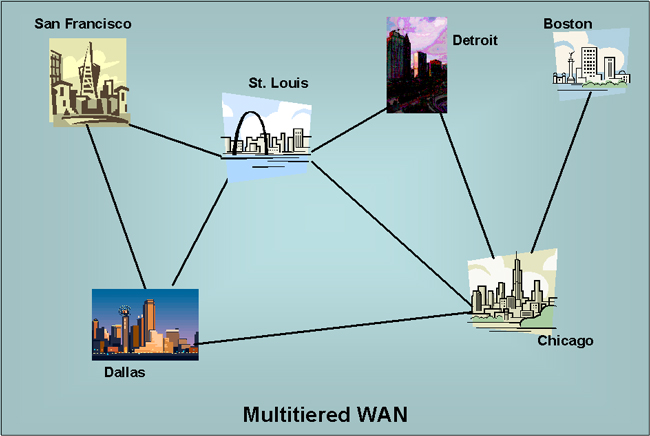
WAN Topologies
| WAN Topologies.
The phrase WAN Topology refers to the
arrangement or relative positioning of links and nodes. This webpage
will present several major types of WAN topologies.
These topologies can end up being analogous, at greater levels of
abstraction/hierarchy, to LAN topologies. The Point To Point WAN. A Point-To-Point WAN has a remote access link for each major node in the WAN. The link can be anything from a T-3 line to a 56 Kbps dial up line. The following diagram represents a intercity WAN. |

Its major advantage is that
Its major disadvantages have to do with
Thus the point-to-point WAN is best when there are only two or three major locations. The Ring WAN. The Ring WAN is developed by having point to point connections that connect the major nodes in a ring. This is illustrated in the next image. |

Its major advantages over other topologies are
Its biggest disadvantages relative to other topologies are
The Ring WAN is best when used to connect only a few sites. The Star WAN. A WAN star is laid out in a star configuration with one location as the "hub". In this case this hub will make use of something called a concentrator router. In the following figure the concentrator router is located in Chicago. |

Its major advantages relative to other topologies are
Its major disadvantage is
To get by some of these problems, network administrators tend to add in some alternative links between sites not at the hub. This increases costs slightly, but gives alternative routes in case of failure or congestion. Providing direct links between all possible pairs of nodes, a full mesh topology, requires a huge expense and is not at all scalable. This leads to the most typical high volume implementation. The Multitiered WAN. A Multitiered WAN makes use of
It is scalable because at worst just one link needs to be added to some concentrator. Though obviously, performance is improved if there are more links. In addition these links can be made due to traffic demands. The following diagram represents a multitiered WAN. |
